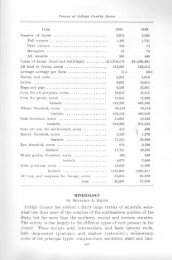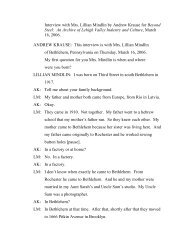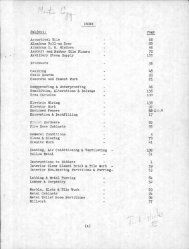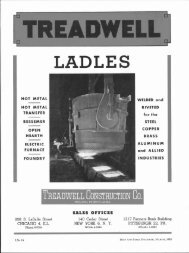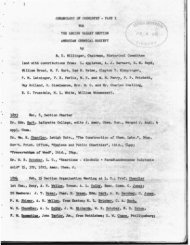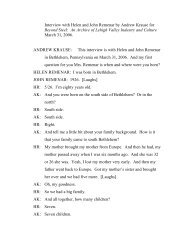WHY PLASTIC DESIGN by Lynn S. Beedle ... - Lehigh University
WHY PLASTIC DESIGN by Lynn S. Beedle ... - Lehigh University
WHY PLASTIC DESIGN by Lynn S. Beedle ... - Lehigh University
You also want an ePaper? Increase the reach of your titles
YUMPU automatically turns print PDFs into web optimized ePapers that Google loves.
205.52 -16<br />
4. The maximum load .will be reached when a sufficient number<br />
of plastic hinges have formed to create a mechanism.<br />
6. Introduction to Methods of Analysis<br />
.Onthe basis of the principles we have just discussed perhaps you<br />
have already visualized how to compute the ultimate load: . Simply sketch a<br />
moment diagram such that plastic hinges are formed at a sufficient number of<br />
section to allow mechanism motion. Thus in Figure 12, the bending moment<br />
diagram for the uniformly-loaded, fixed-ended beam would be drawn such that.M p<br />
was reached .at the two ends and .thecenter. In this way a mechanism is formed•<br />
.Byequilibrium,<br />
WuL<br />
8'= 2M P<br />
...., 16Mp<br />
L<br />
How does this compare with the load at first yield7At the elastic<br />
limit (see dotted moment-diagram in Figure 12) we .know from.aconsiderationof<br />
continuity that the center moment is one-half the end moment. Thus,<br />
WL<br />
+= My +My =3 My<br />
2 2<br />
W Y<br />
Therefore the reserve strength due to redistribution of moment is<br />
16 Mp/t. =<br />
12 My/t<br />
4 M p<br />
3 My<br />
Considering the average shape factor of.WF beams, the total reserve strength<br />
=j (1.14)<br />
= 1.52<br />
For this particular problem, then, the ultimate load was 52% greater than the<br />
load at first yield, representing a considerable margin that is disregarded in




